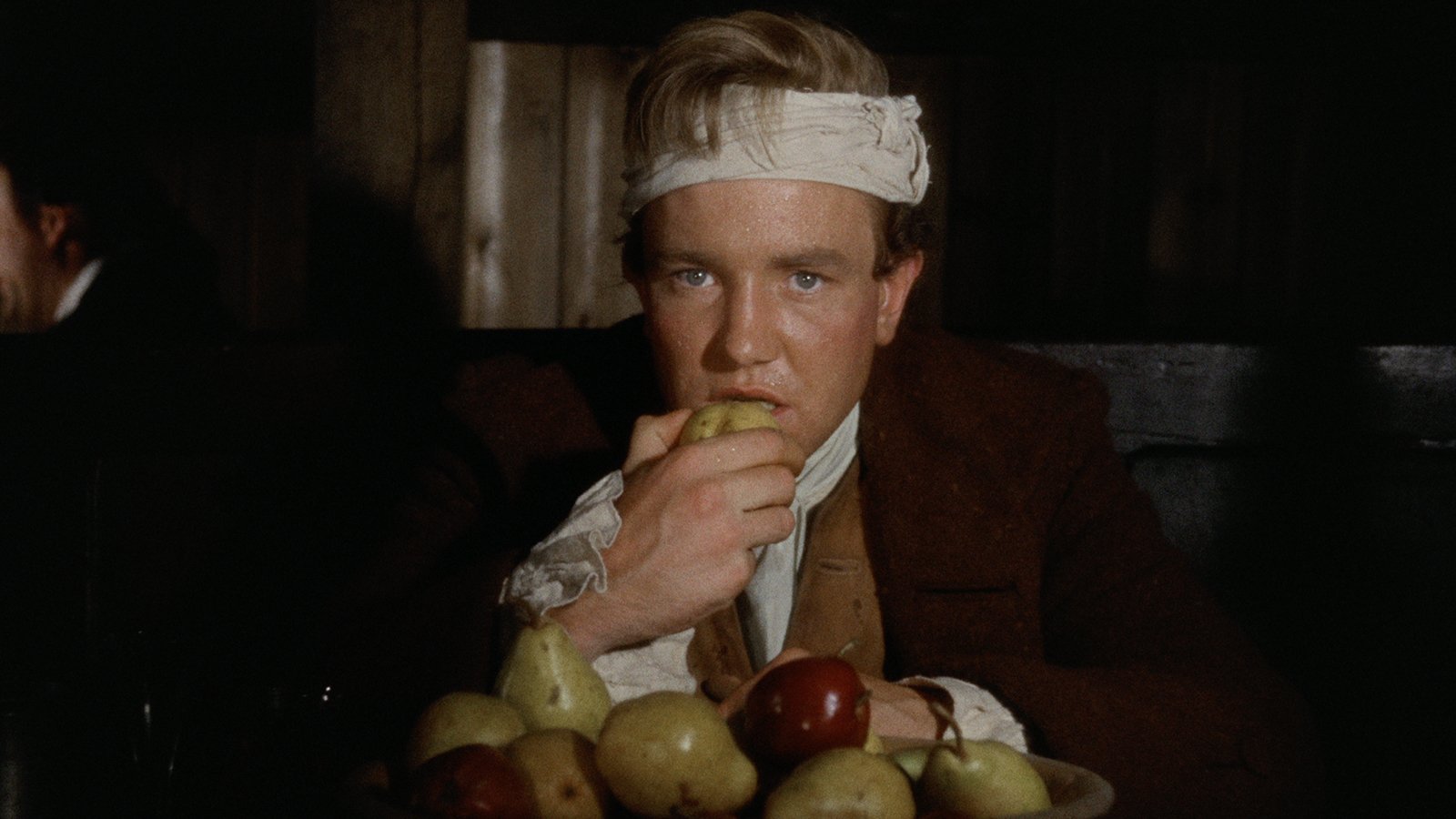“Tom Jones” begins when Squire Allworthy arrives at his country estate after a trip to London. Exhausted, he immediately goes to his bedroom. There, he finds a baby in his bed. Allworthy quickly deduces that Jenny Jones, a servant, must be the mother, but the identity of the father is unknown. Even though the baby is illegitimate, Allworthy still takes pity on him. He names the child Tom and vows to raise him as his own son. Tom Jones grows up, and he travels throughout 18th-century England. He dines with respected colonels and ribald innkeepers, courts grand duchesses and destitute girls, and witnesses hangings and hunts. Tom flourishes in his dynamic times.
In a strange way, the production of “Tom Jones” resembles its story. When the film was released in 1963, critics were as surprised as Squire Allworthy. How could director Tony Richardson and writer John Osborne conceive of this adaptation of Henry Fielding’s seminal classic? For nearly a decade, Richardson and Osborne had been creating realistic dramas about Britain’s socioeconomic ills. Therefore, in the context of Richardson and Osborne’s other works, the gleeful, raunchy “Tom Jones” did seem illegitimate. Yet, just as Tom thrives in his time, the film was a monumental success in its day. It was a boon at the box-office and won the Oscar for Best Picture of 1963. How could this idiosyncratic film accomplish such a feat?
In adapting Fielding’s novel, Richardson and Osborne did not simply film his story. Instead, they drew precise parallels between Fielding’s era of enlightenment and the swinging sixties in Britain. “Tom Jones” is a period piece that ponders its own historical moment and resonates in our times.
The writer Mick Brown describes London in the 1960s as “the global hub of youthful creativity, hedonism and excitement.” Richardson’s vision of the 18th-century abounds in all three. He showcased his own “youthful creativity” by experimenting with a variety of cinematic modes. French New Wave filmmakers like Francois Truffaut and Jean-Luc Godard served as inspiration to Richardson. Truffaut and Godard employed novel editing techniques and broke the fourth wall to tell their stories. Likewise, in “Tom Jones,” Richardson uses abrupt jump cuts to signal the passage of time, and in one of the film’s most delightful moments, Tom stares directly into the camera. He doesn’t want us to see an intimate section of his adventures, so he simply covers the lens with his hat.
Truffaut and Godard both made films chronicling the chaotic developments of youth, and similarly, “Tom Jones” is a bildungsroman. The plot progresses because of Tom’s hijinks and “youthful creativity.” Ultimately, the film ends as all coming-of-age stories do — with the hero’s maturation. In the final shot of the film, Tom embraces Sophie Western, the only woman in the movie that he truly loves. Tom is finally settling down. His surroundings are permeated with new ideas. Just as Tom challenges the authority of his parochial moral and religious instructors, Enlightenment thinkers contradict the dogma of the church. Although she is marrying Tom, Sophie is unlikely to have old hymns played at her wedding. Throughout the film, she expresses enthusiasm for the innovative music of Georg Friedrich Handel, the John Lennon of the 18th-century.
Richardson addresses another central concern of many artists in the 1960s — consumerism. In depicting the 18th-century, Richardson draws attention to his characters’ voracious appetites. Squire Western, the father of Sophie and a peer to Squire Allworthy, sits down for supper early in the film, and the table is covered from end to end in a multitude of meats. When a wealthy lady holds a costume ball, her appetite for money is on full display — she has decorated everything extravagantly.
Richardson does suggest that this consumption can create complications. At one point in the film, the squires go on a hunt, and they are so eager to devour every animal in the forest that they push their horses a little too hard. Blood spurts from a horse’s breast when his rider kicks him too hard. The crimson color of the blood contrasts incongruously with the lush color palette of the rest of the film. Both Squire Western and Tom are visibly uncomfortable after consuming large meals. Furthermore, when people finally arrive at the lavish costume ball, their opulent outfits seem excessively tacky.
The male characters are possessed by another, more troubling appetite — an appetite for amour, no matter what the cost. Tom, the squires and even the clergy seem to treat women as things, not as equal partners. As a narrator explains as Tom embarks on yet another tryst, “to those who find our hero’s behavior puzzling …Tom had always thought that any woman was better than none.” Tom resembles the protagonist of Antonioni’s “Blow-Up,” a seminal film documenting the Swinging Sixties in London. Antonioni focuses on a fashion photographer who treats all his models as mannequins and who is not above engaging in a ménage à trois when he is aroused. Misogyny is pervasive in both the 18th-century and in the 1960s.
Richardson does not go far enough in examining these problematic attitudes, and as a result, “Tom Jones” leaves a strange aftertaste in the mouth of the modern viewer. It is easy to consume Richardson’s fresh take on the coming-of-age tale and his cinematic experimentation, but Tom’s relations with women may leave us feeling as uneasy as the stuffed Squire Western. Tom does not just resemble the protagonist of Antonioni’s film. For all his charm and wit, he recalls the sexual predators of contemporary times. Ultimately, “Tom Jones” not only depicts the 18th-century and documents the 1960s but also stimulates reflection on the events of our day.
Contact Amir Abou-Jaoude at amir2 ‘at’ stanford.edu.
